#mapthearcana
Text
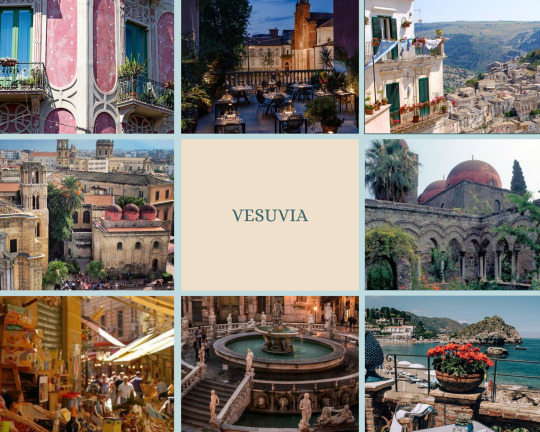
I know Vesuvia is technically based off of Venice, Italy, but I'm throwing that out the window and using Palermo, Sicily for my specific headcanons. So that's where most of these shots were taken (exceptions are photos in the top right - Catania, Sicily / bottom right - Taormina, Sicily / top middle - Milan, Italy). Enjoy!
OCs that call Vesuvia home: Kipling, Khleo, Sascha, Solo
#mapthearcana#arcana moodboards#kipling bronne#khlee von heine#sascha del la vega#solo de la vega#world building
82 notes
·
View notes
Photo

Mapping the Arcana: Other Locations
Dog Breeds of Hjalle
(big thanks to @nicadilly for providing inspiration!)
Over the past centuries, two dog breeds have emerged from the Southern city of Hjalle. Though also cherished by nobles, both breeds are working dogs at their core — specifically, used by rangers to hunt and manage the large and dangerous wildlife that inhabits Hjalle’s surrounding mountainous region.
Drakehounds are built like larger, stockier borzois. They are prized for their tracking ability, leading rangers to dragons, but do not attack the beasts head-on — this would be far too dangerous. Instead, they use their speed to maneuver around the dragon, nipping at the back to give rangers the opportunity to strike.
Hjallan beardogs are small and foxlike by comparison. Despite their size, their intelligence lends them significant hunting ability. When set out as a pack, these dogs are well capable of taking down an entire Coastal Brown Bear.
Both are renowned for their snowy white fur and long, fluffy tails. When the ground becomes too snowpacked, rangers may apply magical salves or booties to protect the dogs’ paws.
#mapping the arcana#mapthearcana#arcana worldbuilding#hjalle#my mc finch definitely wanted a drakehound as a kid#to a child they probably seem horse-sized#btw the beardogs are directly based on stories an Alaska Native elder was telling my class#describing these amazing little foxy dogs that were around when he was a kid#i just googled it and i'm fairly sure he was referring to the now-extinct Hare Indian Dog??#which is incredible#borzoi#dogs#nightposting
56 notes
·
View notes
Text
Arcana Bestiary : Day 1

ʙᴀɴɴᴇʀ ᴀɴᴅ ᴇᴠᴇɴᴛ ᴄʀᴇᴀᴛᴇᴅ ʙʏ @mappingthearcana
Vesuvia is a City-State situated between the Catclaw Desert and the Malvent Strait. Vesuvia and the surrounding area have a Mediterranean climate, with hot summers and mild winters. Vesuvia is a port city, and much of it’s economy revolves around sea trade. The Vesuvian wildlife is as diverse as the people who populate the state.
Below is a small field guide to some of Vesuvia’s more common creatures!
Small Creatures:
Common Jackalope: The common jackalope is a rabbit like creature that grows antlers as they reach maturity, which will continue to grow as they age. Jackalope are found throughout Vesuvia and much of the surrounding areas, as well as in Zadith and the Fennekh Dessert. They are as versatile as the less fantastical members of the lagomorph family. Jackalope are herbivorous, their diet consists primarily of leafy plants, cacti, and roots.
In the wild, jackalope live in small groups in warrens. Groups are usually comprised of several female jackalope, with male jackalope living solitary lives outside of the mating season. During which, male jackalope, called bucks, will become territorial and spar other males with their antlers.
Jackalope, like rabbits, are valued for their meat and their fur. However, their antlers are also valuable in folk medicine and in artisan craft-work. Jackalope are easy to raise and make fine pets, however in recent years the Wolpertinger has overtaken them in popularity due to their comparatively softer and thicker fur.
Vesuvian Wolpertinger: While not native to Vesuvia, wolpertingers have flourished in the wild since their introduction by Drakr immigrants some hundred years ago. The Vesuvian Wolpertinger have developed larger ears and thinner coats than their ancestors as an adaptation to Vesuvia’s climate. Wolpertinger are closely related to jackalope, however a wolpertinger’s antlers are considerably smaller, and are shed in the spring. They also have a pair of wings that allow them to fly for a short distance.
Vesuvian Wolpertinger nest in tree hollows or bramble thickets, and have been observed to hibernate through the summer if the temperatures become too high. The structure of a Wolpertinger’s feet is unique from other lagomorphs, their wrists are capable of turning 360 degrees, similar to a squirrel, which allows them to climb trees. Wolpertinger are primarily herbivourous, feeding on roots, tree nuts, and bark. However they have been observed catching small fish when foliage is scarce.
Wolpertinger are highly prized for their soft, thick fur, and in countries like Firent and Drakr, domesticated wolpertinger have been bred into many different lines to produce a wide variety of fur.
Prospero’s Salamander: A species of salamander that was initially discovered (and according to legend, the familiar of) by the first Count of Vesuvia. Prospero’s salamanders are a sleek, golden brown color with red dapple markings along their back. They have three legs on either side of their torso, and have comparatively less fire capabilities than other members of the Minor Draconic genus.
Prospero’s salamanders are very common throughout Vesuvia, and can easily be found under logs, rubble, or dried river beds. They are a very docile species, and even wild caught ones easily and amicably adapt to living in a home’s stove or furnace.
Large Creatures:
Venterre Boar: Descended from escaped truffle-swine of the Venterre region’s vineyards, Venterre boar are massive animals with a keen sense of smell. Their snouts are noticeably spade shaped, making foraging for roots, truffles, and subterranean creatures very easy.
At a glance, Venterre boar are hard to differentiate from common boar, however the most notable differences are their large size, wiry coats that range in color from dark violet to red, and spade shaped snouts.
Venterre boar can be very dangerous, and are commonly thought to be bad tempered, as opposed to common boar who are usually only aggressive when defending piglets or during the mating season.
Venterre boar are prized for their meat, which is said to have a taste similar to buttery wines.
Shiny Chamois: A light-framed species of antelope that can be found on the Vesuvian plains, through to the Great Gate and edges of the Catclaw Desert. Shiny Chamois are named for their light, sandy colored coats that easily blend into long grasses or sand dunes. Shiny Camois have a pair of ivory colored, pronged horns that develop shortly before the animal reaches maturity.
Shiny Camois live in large herds, usually with 15-30 members. Very briefly, Shiny Chamois were domesticated for use as small pack animals, however this has since fell out of practice as mules and ponies became more common in the area.
Lesser Chimera: (Not to be confused with the Greater Chimera, which is local to Milova) The lesser Chimera is a beast which, according to folk legend, was created by a wizard who had tried to save his pet antelope from the jaws of a leopard, and in doing so accidentally fused the beasts together.
Lesser Chimera are large, with adult males standing roughly 91 cm at their shoulders. Their body is usually a sandy or tawny color, with rosette markings. The secondary head resembles either a domestic goat or a shiny chamois. Unlike Greater Chimera, lesser chimera do not have a serpentine tail. They are typically solitary hunters, however a bonded pair or a mother and daughter(s) may share territory.
Lesser Chimera are often hunted for their pelts and for their blood, which is believed to have magical properties. Lesser Chimera blood is often sold under the guise of being Greater Chimera blood, which does have proven magical properties.
#mapthearcana#vesuvia#the arcana#world building#arcana stuff#mine#this is a little messy but!! it was fun!!#hopefully I'll streamline this for the coming days#mappingthearcana
52 notes
·
View notes
Photo
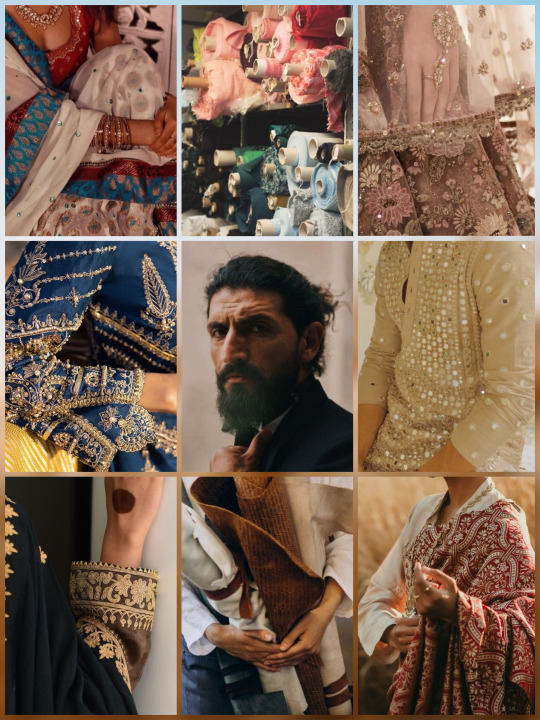
For Day 3 of @mappingthearcana: Prakra, I am taking the opportunity to finally talk about Jamil’s father’s family, the Parsa family.
The Parsa family is a very old family in Prakra, and they have worked with the Royal Family as their official tailors/dressmakers for a number of generations. All of the clothing worn by the Satrinavas (excluding Nadia after her move to Vesuvia) were made by Parsa hands.
Namar Satrinava was a Parsa tailor before becoming the Royal Consort to Queen Nasrin, and their union only served to further solidify the Parsa’s position with the Royal Family.
The current head of the family and the tailoring company they now run is Rafiq Parsa II, Jamil’s father. He has been the head of the company since his father stepped down around 30 years ago. Since a very young age, Rafiq himself has been working on making outfits for the Royal Family, and most of that time was spent alongside his nephew, Namar. Once Jamil and his siblings were each old enough, they were also taught how to tailor clothes.
In more recent generations, the Parsa tailors have expanded into a company, hiring tailors/dressmakers/seamsters outside of the family as more and more noble families from Prakra and it’s surrounding countries and towns expressed their interest in having clothes made by them. The company currently has a hundred or so tailors employed not of the Parsa family who usually service lower nobles. Rafiq and his family still directly service the Royal Family, however.
When Alec’s father, Romar al-Saleh, was alive, he worked as part of the Parsa company, and he is who she first learned to sew from before her parents passed.
Rafiq’s wife, and Jamil’s mother, Chiara Giuliana D’Oria, is the co-head of the company along with him, and while Rafiq operates more hands-on, making clothing by hand, Chiara runs the business side of things. She coordinates, trades, and deals with noble families and foreign families to have clothing made, and often designs them herself. She has a unique branch of magic called nemakinesis which allows her to manipulate textiles as needed.
Jamil’s younger brother, Hakim Raul—a skilled tailor, businessman, and alchemist—is now in position to lead after his parents retire, but they do not appear to be ready to do that any time soon.
Jamil’s younger sister, Eufemia Aliyah—also a skilled tailor with a particular affinity for cholormancy—is perhaps the closest to the Satrinavas, as she often works with Namar on fashion shows and events.
And though Jamil wanted nothing to do with his mother and eventually running the business alongside her, he is the most skilled tailor of his parents’ children, despite his lack of magical abilities.
40 notes
·
View notes
Photo

Welcome to Part Two of my post for @mappingthearcana‘s worldbuilding event, focusing on Nopal, the Catclaw Desert and the Bulan Mountains.
PART ONE:
i. THE CATCLAW DESERT
ii. THE BULAN MOUNTAINS
PART TWO:
iii. NOPAL
Now, let’s get to our main focus: the little town of Nopal! What great marvels could be awaiting us here? 👀
Much of this is inspired by the Chihuahuan Desert and Mexican culture, originally inspired by this post on how Nopal is similar to Northern Mexico and Southwestern US.
Feel free to point out any errors or anything~
iii. 🌵🌼 NOPAL 📚💚💚
AN INTRODUCTION
- Nopal is a town located on the edges of the Catclaw Desert and is the largest permanent settlement in the area
- Time has not been kind. Throughout the years, multiple droughts, harsh conditions and the convenience of sea travel has made Nopal overlooked by most merchant routes, so they receive little outside trade or help from beyond the region
- Still, they persevere, as is typical of those who call the Catclaw desert home
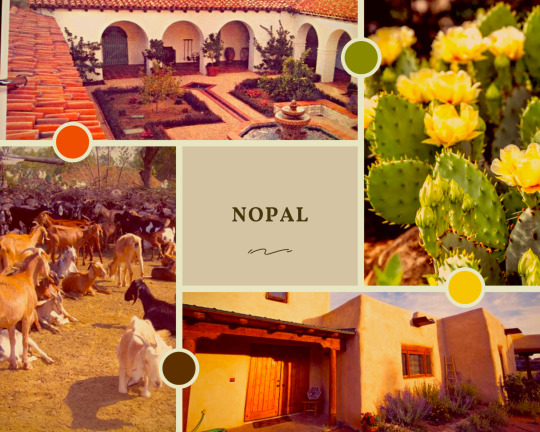
AGRICULTURE AND FOOD
- Nopal’s staple crop is the prickly pear cactus, a plant native and abundant in the Catclaw Desert. On the outskirts of their town are fields of cacti crops
- Goats and sheep are common livestock, providing dairy, fabric, meat
- Other staple foods like corn and wheat, and meats like beef and chicken are usually obtained from trips to the Bulan mountains or through the nomadic tribes
- No Nopal dish can be separated from spices! Spices are grown on a smaller scale, and are numerous enough around the desert itself. Onions, garlic, chili, cinnamon and peppers are among some of the typical spices found in a Nopal kitchen
- The people of Nopal do hunt from time to time, often gathering desert hares, birds or eggs
- Fish and seafood are obtained through the occasional trips to the coast and to the Bintang port
- Nuts and sweet potatoes can be found in just about every household’s little garden, often made into snacks, like turrón, candied nuts and sweet potatoes, and sweet potato cakes
LOCAL INFRASTRUCTURE
- Most houses are made from mud brick, typically with a stucco finish, and their roofs tiled with clay.
- Paint is more of a luxury here, so many houses are simply painted white.
- The light colors reflect heat during the day, and when the temperature drops after sunset, the stucco walls help to retain warmth to get through the chilly nights.
- The largest building in the town is Nopal’s only latifundia. As agriculture is the lifeblood of Nopal itself, the latifundia can be considered the heart of the town
- The latifundia contains animal pens and rearing facilities that are free for use by any of the townsfolk. Farm tools, crop planning, as well as crop harvest and storage, all of that is centered here
- Due to the importance of the latifundia in sustaining life in Nopal, the town head is directly in charge of maintenance and upkeep, as well as handling all agricultural-related affairs
- Unlike the Bulan mountains, water is not as abundant. Families rely on the few large wells around the town for water, typically making weekly trips to draw water and store them at home
- Only the latifundia has a built-in plumbing system, mainly for agricultural purposes
- The town head is allowed a few personal rooms in the latifundia, and will move back to their original home once they step down
- There are also guest rooms in the latifundia, primarily for important visitors
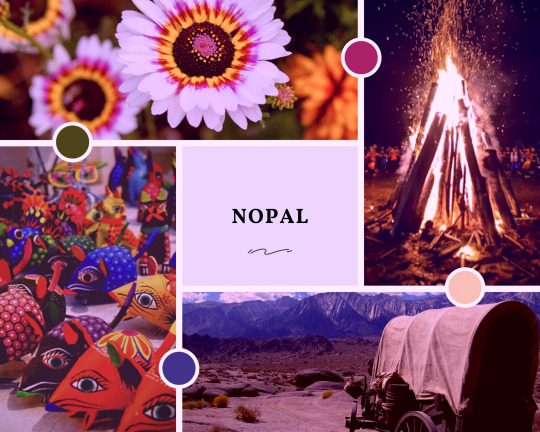
COMMUNITY AND CELEBRATIONS
A single grain of sand can never survive as a desert
- A popular saying in Catclaw, it refers to how a single person cannot survive alone in the desert. Thousands of grains make up a desert, as do people make up a community, and this allows them to thrive in the harsh climate
- Nopal is a very close-knit community. The neighborly spirit is strong and unity is prized as the key to everyone’s survival
- It is important to sustain good relationships with one another and help each other in times of need. Nopal often feels like one big family, with everyone knowing everyone else and their business
- On top of that, as the largest permanent settlement in the desert, Nopal tends to be designated as a social hub by the rest of Catclaw
- The nomadic tribes of Catclaw do not simply stop by Nopal, they are considered part of the community as well. One tribe, one town by itself can only sustain its people for so long. Together, all of their people can survive for decades to come
- The tribes often gather at Nopal for big desert-wide celebrations, like the Butterfly Rain Festival, to celebrate the coming of spring, or the Painted Daisy Festival that celebrates the harvest
- During both these festivals, the town head and the tribe elders and leaders will gather together for meetings and discussions, to talk about how their people are doing, what resources or help they need, about upcoming harvests and trade routes, and of course, to simply catch up with each other
- The town head is typically selected at one of these occasions, the selection agreed upon by the other tribe leaders present
- The Painted Daisy Festival in particular is considered a very important occasion
- It is a celebration of family, hope and unity, reminding the people of the joy of family and the blessings in their life. Despite how rough life can be, they are all here together, warm food at the table and surrounded by loved ones
- All the stops are pulled out for this festival. A month before see people already beginning preparations, tribes starting to arrive in the town, and most townsfolk start taking half-days from work
- And in the three weeks that make up ‘Painted Daisy season’ (the week before, the week after, and the week of the festival) have people taking breaks from work almost entirely
- Rich paints are reserved for such occasions, for decorations, for murals, for pottery, and of course, for copal, the colorful wooden animal figures typically present in Catclaw celebrations
- Not to mention, dyes for new clothes and fabrics
- There is typically a big feast (or a few) for the townsfolk and tribespeople around night-time, where everyone gathers together by the bonfire pit, to eat, to dance, to laugh and be happy
OUTSIDERS AND HOSPITALITY
- But during such celebrations, where do all these tribes stay?
- Well aside from the neighborly spirit, Nopalis also value good hospitality. The better the host, the better the reputation
- While tribe leaders and elders stay in the latifundia, the people of Nopal fight tooth and nail to host the other tribe members in their homes, one of the few annual opportunities to show off their good hospitality
- Some tribes may choose to camp on the outskirts, while letting older folk, those who are pregnant, and children to stay with local households
- Outsiders from beyond the desert or Bulan mountains are an even rarer sight. Typically, they also stay at the latifundia, but no one in Nopal would pass up the chance to host a visiting outsider in their home
- As a result, there aren’t any inns or similar establishments in Nopal
EDUCATION AND MAGIC
- Barring the Bulan mountains, Nopal contains the only formal school in Catclaw, a joint effort by both the town and the tribes
- Parents from Nopal and the tribes send their children there for basic schooling. Children from tribes may ride to and from their camps, or stay with a local family
- Schooling here finishes at 12 - 13, covering basics like reading, writing and numbers
- After, most will either start learning the family trade or take on apprenticeships, usually within the confines of the desert. This is due to the fact that the people of Catclaw will rarely charge each other much, if anything at all, to offer one of their own an apprenticeship
- Higher education may be pursued in other regions. The Bulan mountains offer a wider range of apprenticeships and some opportunities for higher learning
- As for magicians, Nopal does not have any
- It is not because no one has magic, but to begin with, apprenticeships beyond Catclaw are expensive and a magical education even more so
- It is lucky at all to meet a magician passing by Nopal, much less one that is willing to take on an apprentice. Typically, they tend to charge a lot, more than what an ordinary household can afford
- Parents may attempt to make efforts to give a magical education regardless, often due to the strong and wild powers their child possesses
- One way may be by sending their child to travel with a tribe and find a teacher, or searching out a suitable magician to send them to, often in Zadith
- In recent years, the traveling librarians of Catclaw have been hoping to expand on that front
The Traveling Librarians
- The traveling librarians are a group of merchant scholars, its members usually hailing from Nopal or the desert tribes
- Decades ago, there was a merchant group made up from different tribes, a typical practice where they would pool together resources to trade beyond the desert and mountains
- During their travels, they wanted to bring more books and reading material back for the school in Nopal, to help the new generation
- Over time, more and more books were collected and stored in the school library, open to both children and adults, to townsfolk and tribespeople
- Tribes that traveled far from Nopal started requesting if books could be delivered, and a wagon was built to help carry the books to and fro. Eventually, the library ran out of space and the excess reading materials were transferred to the wagon
- At a Painted Daisy Festival, a young merchant from one of the tribes suggested to the leaders to formally establish the traveling library, allowing for books and knowledge to reach all of Catclaw
- This was agreed upon, and like the school, all tribes would help to chip in to continue sustaining the endeavor
- The traveling librarians wander the Catclaw Desert, offering books and lessons to its residents
- Currently, there is more than just one wagon, and the librarians often take turns in their responsibilities. Some will stay and manage the library, while others will travel to Vesuvia, Venterre, Prakra, and farther to trade and do business, allowing income for both the library and their own families
- The merchants will also bring back new books or knowledge to be added to their current depository
- Overall, the traveling librarians are considered a highly respected profession within the Catclaw Desert
–––––––––––––
Thanks so much for reading! 🥰🥰 I hope you enjoyed it!
#mapthearcana#the arcana game#the arcana headcanons#the arcana meta#the catclaw desert#the bulan mountains#the arcana fan edits#yayyy its doneee#i hope this was helpful & enjoyable#it certainly was for me#also again if i slipped up anywhere. pls feel free to correct me#mimi's originals#writing by the mims#this was actually supposed to be one post but uhhh as u can see it got wayy too long#typical me lolol#also!#FINALLY i have a more concrete setting for my fics akjhdasj#Mine prequel fic here we come!!
43 notes
·
View notes
Text

ʙᴀɴɴᴇʀ ʙʏ @mappingthearcana
MOC's Arcanaverse: Vesuvian Culture
Customs
Public bathing is a very common practice in the city of Vesuvia, due to the large number of public bathhouses. Bathhouses are not divided by gender, and public nudity is not considered taboo. Many sailors, shopkeeps, and laborers wear nothing but smallclothes at the height of Vesuvian summer.
The common language spoken in the city is known colloquially as "Vesuvian", but it is actually a hodgepodge of many languages (mainly Prakran, Rostam, and Nuru) as well as dialects of Vesuvian - it's formal language name is "Port Vesuvian" for this reason. Peoples from the Eastern Seas (such as Nevivon) tend to pick up Port Vesuvian very quickly for this reason.
Vesuvians value traits of warmth, curiosity, and hard work. They pride themselves on being welcoming and understanding of all; everyone is considered Vesuvian, whether they’re Vesuvian-born or Vesuvian-made. It’s rare to find a bad-natured Vesuvian amongst the working class, where most people either run shops or perform services and trades.
Clothing
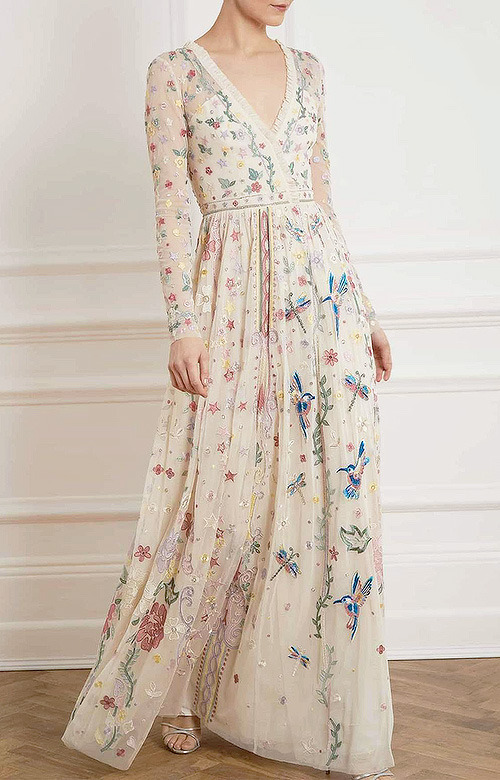

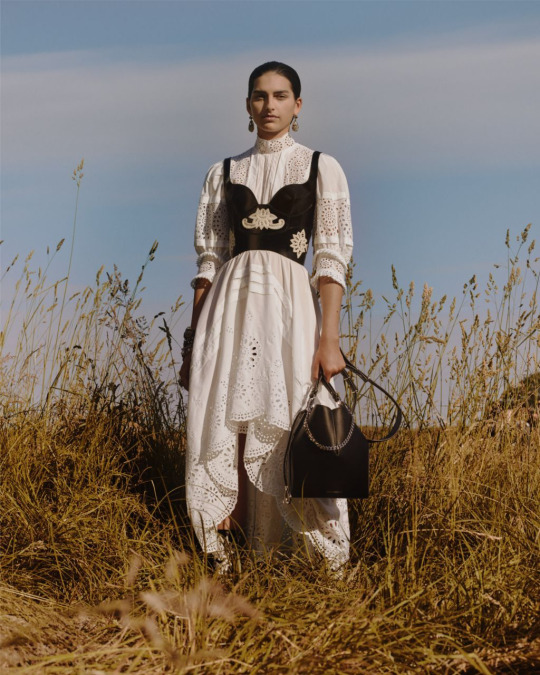
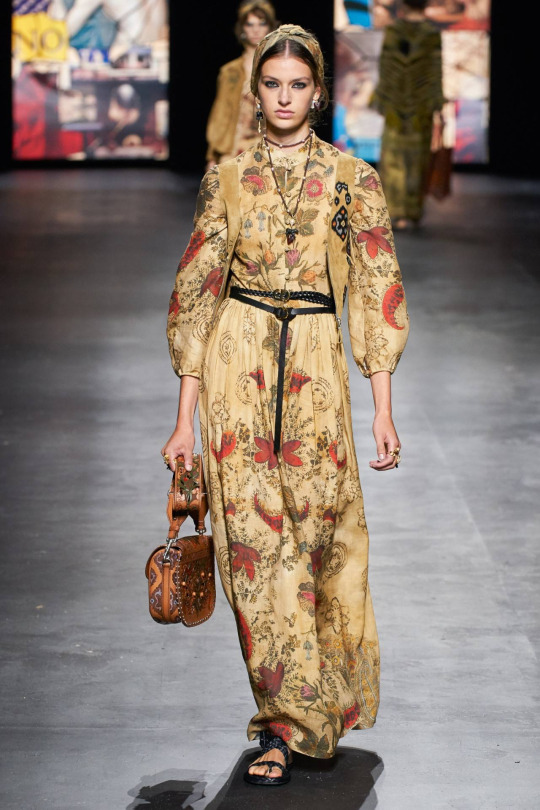


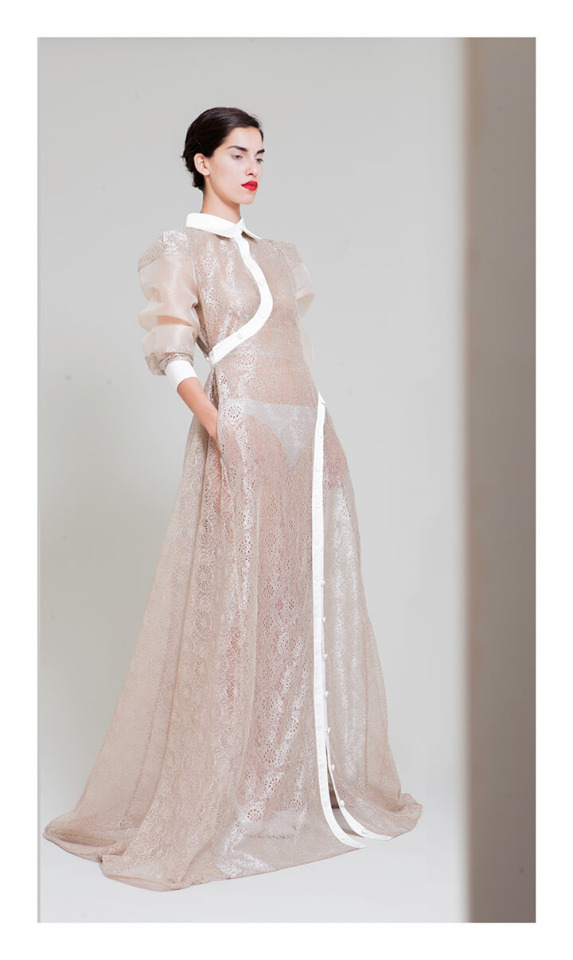


Being a port city, Vesuvians have access to fabrics, patterns, styles and cultural influences from around the world. This reflects in their clothing, fashion, and trends, as well as Vesuvia’s influence on the fashion world.
Wealthy Vesuvians are dogged followers of fashion and international trends, and there is a booming demand for designer clothing in the Heart and Business districts. Many internationally recognized designers and clothing manufacturers call Vesuvia home; some consider Vesuvia to be the fashion capital of the Earthside realm. (Having an absolute knockout and fashion icon for a Countess doesn’t hurt, either.)
The average Vesuvian has less access to designer goods, but fashion still has its influence. Trends from around the world come and go, such as Rostam-influenced silhouettes, Romanni jewelry, or lacquered accessories from Nippon.
However, most Vesuvians opt for light flowing fabrics in either whites, brights, and floral or arabesque patterns. Lace is common, as is embroidery (often handmade or homemade), as are oversized silhouettes cinched with leather or suede belts, vests, or corsets. Men often opt for leather or cotton trousers or leggings. Shoes are sensible, sturdy and often waterproof; boots and sandals of leather or suede.
References: Needle & Thread SS 2020; Christian Dior Resort 2021; Alexander McQueen Pre-Spring 2019; Christian Dior Spring 2021; Etro FW 2020; Anna Sui SS 2020; Hussein Bazaza SS 2014; Alexander McQueen Pre-Spring 2019; STAUD SS RTW 2022
Food & Cuisine
Practically all foreign cuisines are available to Vesuvians of all income levels - Drakran, Prakran, and Busanese cuisines are particularly popular. Vesuvian cuisine has adapted to all of these influences - curries, noodle dishes, stir-fried dishes, tofu and pasta all have a place on the average Vesuvian dinner table.
Cinnamon, orange zest, and orangeflower water are all very common spices and flavorings for desserts, sweet pastries, and savory dishes. The flavor combination is often considered emblematic of Vesuvian cuisine.
Vesuvians love their spicy food. Gallipoli pepper, Busanese pepper, Ming Waspflower buds, and Desert Nomad pepper are all popular spices, as are hot sauces from all cultures.
Many Vesuvians have their own rooftop gardens in which they grow herbs, vegetables, and even orange trees. Tomatoes, greens, lettuces, long beans, squash and bell peppers are common sides, as are pickled winter vegetables.
Potatoes, gourds and pumpkins of all kinds can also be grown in Vesuvian soil - hot sweet potatoes with honey and cinnamon is a popular street food in the drizzly winter. Pumpkin is popular for sweet and savory dishes year round.
Because wheat and grains are a major Vesuvian export, breads, pastries and sweets are a big part of the Vesuvian diet. Bread is often baked at home, but is also commonly sold in shops and stalls in the bazaar. Common Vesuvian breads include challah braids, sesame buns, seed bread, and orange rolls.
@mappingthearcana
#mapthearcana#mapping the oracle#mapping the arcana#mapping vesuvia#the iris oracle#oracle references
32 notes
·
View notes
Text
Day I: Vesuvia
Banner and event created by @mappingthearcana

It’s a mess.
At the same time, it’s got ancient history of battling against Prakra, a powerful empire. Against all odds, Vesuvia somehow managed to survive each and every time. Even if the people wouldn’t survive, the city-state itself would forever stand in one form or another. Deals with demonic entities can better guarantee for it to do that!
People that move to Vesuvia—or decide to stay when there are opportunities to leave for elsewhere—are often questioned by those more privileged of why. Why would they keep living in a place as tumultuous—and at times ridiculous—as Vesuvia?
While a demonic deal will ensure that Vesuvia will always remain, it’s the spirit of the people that keeps it alive.
23 notes
·
View notes
Text
Arcana Bestiary : Day 2

ʙᴀɴɴᴇʀ ᴀɴᴅ ᴇᴠᴇɴᴛ ᴄʀᴇᴀᴛᴇᴅ ʙʏ @mappingthearcana
The South is a large, primarily unsettled region bordering the Frozen Sea. The South encompasses the Shining Steppe, the Scourgelands, the Spines mountain range, and Tarske forest. The South has a primarily tundra / taiga climate, winters are long and harsh with spring and summer in the furthermost regions lasting only a few weeks.
Below is a field guide of some of the South’s creatures
Spines Cheetah: Also known as the Southern Cheetah; Spines cheetah are found throughout the southern plains and steppes, and although they are a large predator, they pose little threat to travelers and are quite reclusive.
The cheetah has a stocky, thick furred body with long legs and large paws, giving it the ability to run at high speeds over rocky terrain and deep snow. (Think a snow leopard, but elongated) Their fur is spotted, and is always either gray, white, or a pale gold. Cubs are a mottled brown to gray to blend in with the ground and rocky outcroppings.
The Spines Cheetah is revered by some Scourgelands tribes, being admired as an efficient and silent hunter. They are often depicted in ceremonial art, and to wear a cheetah’s pelt denotes great social standing and strength.
Ash-Spotted Eagle: Thought of as the King of Birds in the South, the Ash-Spotted Eagle is a massive bird of prey that has been known to carry off young livestock. They have incredibly keen eyesight, and have been observed hunting at night as well as during the day.
The Ash-Spotted Eagle is named for the black spots on it’s breast and underside. It is primarily gray and black, with males sporting bright red primary feathers.
Ash-Spotted Eagles are fiercely territorial, and have been known to attack humans who wander too closely to their nest sites, which are usually built on cliff faces and outcroppings. Some tribes have attempted to train the eagles for use in hunting, however due to the eagle’s unpredictable nature, the use of Tawny Hawks is more popular.
Snow Ibex: Named for their thick white fur, the Snow Ibex is the largest of the antelope / wild goats found throughout the south. They are primarily found close to the Spines Mountain range, and are one of the primary prey animals of the Spines Cheetah.
Snow Ibex live in small herds, typically comprised of a male and several females as well as their young. Male ibex are very territorial, especially during the mating season, and fights between males typically only end once one ibex is dead, their horns hardening and becoming sharper as the season changes.
Snow Ibex are valued for their thick fur, savory meat, and their horns are often used to make drinking and war horns. Because of their large size and the fierce dispositions of bucks, hunting and killing an ibex buck is often considered a right of passage in some of the societies surrounding the mountains.
Shell Otter: Shell Otters are named from the thick, pale colored scales along their backs and tails, which are similar to the plates on a sturgeon.Shell otters are found throughout the rivers and lakes of the South, as well as on the beaches of the Frozen sea.
The shell otter has thick, fur that ranges in color from gray to a murky blue. The scales along their backs allow them to break through ice floes while swimming, making them a nuisance to ice fishers.
Shell otters live in small family units, and are relatively friendly. Often they will steal supplies from fishermen in an attempt to play with them.
Speckled Gryphon: One of the smaller gryphon subspecies, Speckled Gryphons have a front that resembles a snowy owl and hindquarters that resemble a lynx. Speckled Gryphons often compete with Ash-Spotted Eagles for territory and food.
Speckled Gryphons, as well as Tawny Hawks, are often raised and trained for use in hunting and tracking.
Steppes Bear: A sacred animal to the Kokhuri peoples, Steppes bears are large, with males measuring 121 cm / 4 ft. at the shoulder. Their fur is a dark gray to brown, and they often have unique whorl markings on their chest and underbelly.
Steppes Bear are one of the top predators of the South, rivaled only by worg packs or wyverns. Unlike most bear species, where the male has little involvement with raising cubs, Steppes bears have been observed living in small family units. They also do not hibernate, and are instead active all year.
Although they are one of the regions top predators, like the Spines Cheetah, Steppes bears are relatively gentle and reclusive, and rarely attack travelers unless provoked.
#mapthearcana#mappingthearcana#arcana world building#the south#the arcana#arcana stuff#mine#definitley feeling better about this format where its just kind of rapid fire#also theres less i guess?? fantastical creatures in the south since it seems like magic isn't as ingrained there as like Vesuvia or Prakra
41 notes
·
View notes
Text
Arcana Bestiary : Day 3
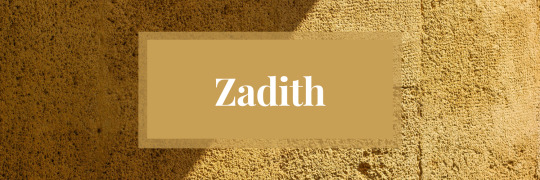
ʙᴀɴɴᴇʀ ᴀɴᴅ ᴇᴠᴇɴᴛ ᴄʀᴇᴀᴛᴇᴅ ʙʏ @mappingthearcana
Zadith, an old country situated across the Malvent Strait from Vesuvia. Despite being in such close proximity, the climate of Zadith is notably more arid and dry, with many superstitious folk warning that the Fennekh Desert will swallow up the land if left unchecked. Zadith is the birthplace of alchemy, the art of joining magic and science together. Some of the greatest improvements to everyday life, medicine, and technology have come from Zadith.
Below is a field guide of some of Zadith’s creatures, particularly those that are found in the nearby desserts and oasis
Rattling Hydra: Found in both Zadith and across the Malvent Strait in Nopaland the Catclaw Desert, the Rattling Hydra is a fearsome beast that has long since been a danger to travelers and rural villages in the region.
The hydra resembles a pit viper and bears six to eight heads, all of which have a venomous bite. It has a mottled brown body with a distinctive diamond pattern down its spine. The animal’s name comes from the distinctive structure on it tails that produces a rattling sound, often as a warning that the hydra is about to strike.
Although very dangerous to obtain, the hydra’s venom is incredibly valuable for its use in medicine.
Nightsky Camel: The Nightsky Camel (also called the Blue Camel or Speckled Camel) comes from it’s distinctive coloration. It has thick, dark fur that ranges from black to blue, covering white skin, which under certain lighting makes it appear as though the animal had stars on it’s body.
While they have been introduced north to Prakra and across the sea into Vesuvia and beyond, the Nightsky Camel is local to Zadith and the Fennekh desert. They have been valuable pack and transport animals for centuries, and even wild camels have a noticeably friendly and agreeable nature.
Cactus Cat: Small to medium sized felines that bear a distinctive greenish-brown prickly coat. Kittens are born with stripes and much softer fur. Cactus cats have a long tail that ends in a rounded bulb with spines, which when threatened the cat will use like a mace.
Cactus cats nest in sand burrows or in hollowed out cacti. Their diet consists primarily of rodents, birds, snakes, and scorpions. Folklore says that they are immune to most venom, including the venom from Rattling Hydras.
Cacti Cat are a common sight around rural settlements and farms, as they are good mousers and less likely to be preyed upon by hawks, jackals, or hyenas than a regular cat. A domesticated variant of the cactus cat that retains the soft fur it has as a kitten has started to become popular with the Zadith and Vesuvian gentry.
Zadithian Roc: Found in the skies of Zadith all the way to the Clouded Mountains, the Zadithian Roc is a giant bird of prey that has been reported to be capable of carrying off adult camels and horses.
The Roc has beautiful plumage, with males being gold and tawny while females are silver and white. Chicks hatch with dark plumage that changes as they mature.
According to legend, at one time in the Clouded Mountains there was a coven of magicians who had managed to tame several Rocs, and were said to fly on their backs at night.
Masked Unicorn: Light framed and slender, these beautiful equines are found only in the deepest parts of the Fennekh desert. They have shimmering coats that blend in with the sand and heat waves when seen from afar, and have distinctive facial markings similar to an Oryx.
Like all unicorns, Masked Unicorns are hunted primarily for their alicorn, which has proved to be an ever valuable reagent for alchemy. They are most active during the hottest parts of the day, when the shimmering effect of their coats provides the most camouflage possible.
Aside from human hunters, the Masked Unicorn’s primary threats are Brass Dragons, Jackals, and Sand Worms.
Common Basilisk: Found throughout Zadith and the surrounding region, basilisks are members of the lesser draconic family, and are similar in size to a large iguana or monitor lizard. The common basilisk comes in a wide array of colors, which is thought to be an adaptational warning to other creatures of the basilisks’ natural defenses: a petrifying gaze and a venomous bite.
Common Basilisk, and any member of the Basilisk family should only be observed from afar, as recovering from petrification is a long and painful process. This has led many to think that the basilisk is an inherently aggressive creature, when in truth the creature just wants to be left alone to bask in the sun.
A few animals have a natural immunity to the Basilisk, this being other draconids and most unicorn species. Basilisk blood and saliva has very potent magical properties, which has led to the risky business (and sometimes inhumane) of basilisk farming.
#mappingthearcana#mapthearcana#zadith#asra alnazar#arcana#the arcana#arcana worldbuilding#mine#REALLY surprised to see Nopal wasn't one of the days#and since Zadith is marked as a temperate zone on the map I really wanted to focus on a more desert vibe since one is right there close by#also thought about just having one of the entries reading#'Sand Worm: the worm from Dune'#vlastomil route leaked he drags you out to the middle of the fucking desert for a worm that inevitably gets picked up and eaten by a roc
36 notes
·
View notes
Text
Arcana Bestiary : Day 3
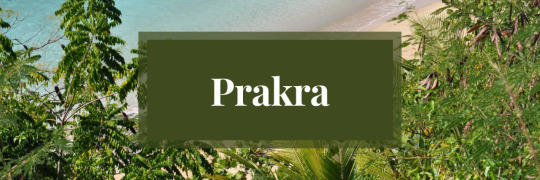
ʙᴀɴɴᴇʀ ᴀɴᴅ ᴇᴠᴇɴᴛ ᴄʀᴇᴀᴛᴇᴅ ʙʏ @mappingthearcana
Prakra; an old and powerful kingdom seated between the Bulan and Clouded mountains. A truly beautiful region, with white sand beaches leading to the Emerald Sea and the legendary Star Lakes to the north. Summer are long and humid, with winters being short and balmy. Prakra makes the ideal tropical escape.
Below is a field guide of some of Prakra’s wildlife
Pearl Owl: Native to coastal Prakra and the Pearl Isles, Pearl Owls are medium sized birds, being similar in build to barn owls. Pearl Owls have a distinctive crest on their brows and deep set, heart shaped faces. An adult’s feathers have an opalescent sheen and range in colors from white, pink, lavender, and light blue; chicks are a mottled gray.
The Pearl Owl’s diet consists primarily of fish and mollusks, and they have a unique ability to digest pearls, which is thought to contribute to their coloring. (This also, incidentally, has made them very unpopular with pearl and oyster farmers.)
Pearl Owls are very popular among the Prakran nobility, and adapt relatively well to captivity. Their feathers are also often used in fashion, which has unfortunately caused a decrease in their wild population in recent decades.
Prakran Fire Eel: Found throughout freshwater rivers and lakes in Prakra, as well as in the shallows of the Star Lakes. The fire eel is a member of the “false wyrms” family, which also includes creatures like the Temperate Lindwurm.
The Prakran Fire Eel can grow to be 91 cm / 3 ft. long, though this has only ever been observed in the hot springs at the foot of both of Prakra’s mountain ranges. The eel is a dark sanguine color with pale, shimmering spots or brindling. The eels require very warm and shallow waters to thrive, and become noticeably sluggish in cooler climates.
Fire eel meat is a common staple in Prakran cuisine, it’s meat is described as being tangy and having notes similar to cumin. The oil produced by the eels is also valuable, and is used to fuel lanterns.
Clouded Peryton: Found in the high altitudes of Prakra's mountains, Clouded Peryton’s are among the smallest species of peryton. They are light framed, pale coated deer with darker gray dapples and silver wings.
The Clouded Peryton’s diet consists of lichens, moss, and small rodents. This expands to leafy plants and small fish during the winter months, when the peryton migrate to the lower steppes and area around the Star Lakes. Unlike some of the larger species of peryton, Clouded Peryton are relatively harmless, and not territorial.
Pearl Isle Unicorn: (Also called the Prakran Unicorn), native to the Pearl Isles and introduced to the Prakran mainland by the fifth Queen of Prakra. Pearl Isle unicorns have short, glossy coats that are either sandy or fawn in color, often with a darker saddle marking on their back. They have lean frames and like all unicorn species, leonine tails. Their horns are typically a dark chestnut or rusty color, and curve at an angle.
Pearl Isle Unicorns live in small herds comprised mostly of several females and their fawns, with males being solitary or living in pairs.They feed on grasses and low hanging fruit trees, and are most active at dawn and dusk.
Unlike most species of unicorns, the Prakran Unicorn has yet to face threats from over-hunting due to protections placed by the royal family, and the trade of their alicorn - the magic laden fibers and shell of a unicorn’s horn, are strictly regulated. Medical tools and dishes made from local alicorn are some of the most prized heirlooms of the Prakran crown, and any “replicas” sold commercially are almost guaranteed to be fakes.
Prakran Lion: The largest of the big cats found in Prakra, the Prakran Lion was originally thought to be a hybrid between a leopard and a tiger before being classified as it’s own species. It has a distinctive bronze colored coat, with dark stripes and rosette patterns unique to every individual.
The Prakran Lion tends to stay far away from human settlements, and prefers to stay deep within the region’s tropical forests. Prakran Lions are massive animals, with adult males measuring 152 cm / 5 ft. at the shoulder. They have been known to hunt and eat leopards and tigers who encroach on their territory.
Many cultures in Prakra and the surrounding mountains regard the lion as a divine animal, and their fur is often a centerpiece in important ceremonies.
Rainbow Amphiptere: A medium sized serpent known for its iridescent scales and colorful plumed wings, The Rainbow Amphiptere is often found coiled around branches in the jungles of Prakra.
Rainbow Amphiptere are part of the constrictor group of the winged serpent family, their usual diet consisting of rodents, birds, or young deer and goats on occasion.
Because of it’s fairly docile nature and beautiful scales, the Rainbow Amphiptere has become an increasingly popular pet among nobles and common folk alike. Several groups in the Pearl Isles have begun breeding different color morphs, funded largely in part by several local noblemen.
#mapthearcana#mappingthearcana#prakra#arcana#arcana worldbuilding#mine#ok i had a LOT of fun with this one#i had to remind myself that my limit for bestiary posts is 6 critters#just bc i kept thinking of them#tropical settings just lend themselves to so much variety#also...@emily bottomvalerius I 100% had Sam in mind when I mentioned the amphiptere husbandry groups
37 notes
·
View notes
Text
Arcana Bestiary : Day 4

ʙᴀɴɴᴇʀ ᴀɴᴅ ᴇᴠᴇɴᴛ ᴄʀᴇᴀᴛᴇᴅ ʙʏ @mappingthearcana
Nevivon, a small port city located on the shores of the Salty Sea and Strait of Seals. The city is the Northern most outpost of the Azovian Empire. Nevivon’s primary exports are various salts and woven textiles, it is often the last stop made before entering territories controlled by Firent. Nevivon has a mild and temperate climate. Winters and Summers are neither too long or too harsh.
Below is a field guide of some of Nevivon and the surrounding water’s creatures.
Salt-flats Crane: Long-legged white birds with tan primary feathers, Salt-flats cranes are primarily found along the coast and around the inland hot springs of Nevivon. The birds nest in small dug-outs in the sand, or on occasion in inactive geyser heads.
The birds are valued by the local peoples who work the flats and salt mines, as they keep vermin and serpent populations under control. Because of this, the people of Nevivon have a fondness for the cranes, and killing them is frowned upon.
||
Temperate Lindwurm: While not a true wyrm, the Temperate Lindwurm is still a member of the draconic family, though more closely related to salamanders. The Temperate Lindwurm is a large, serpent like creature with stubby forelegs. It has dappled green, brown, and gold skin, helping it to blend into the forest floor. It nests in abandoned burrows, or, more aggravatingly, will take up residence in large communal wells.
The Temperate Lindwurm has a relatively weak venom compared to other species of Lindwurm, and typically kills its prey through constriction. Temperate Lindwurms can grow up to 304 cm. / 10 ft. in length.
The meat of the Lindwurm has a sour taste, and isn’t thought to be fit for human consumption. The hides of lindwurms however, have been used to make waterproof boots and gloves.
||
Salt Seal: The largest of the furred seals, Salt Seals get their name from their distinctive speckled fur, which consists of a dark undercoat and lighter, ticked outer-coat.
Salt Seals are usually quite friendly and even tempered, which can be a detriment as their fur is becoming increasingly popular among Azovian and Firentian nobility. Their meat and blubber is also a valuable resource, being a staple in many Nevivon dishes.
||
Common Peryton: Large elk with banded brown and white wings. The Common Peryton is typically found further inland, but is known to migrate to the coast during the winter seasons to prey on fish and seals.
Like most species of Peryton, both males and females are territorial and aggressive. Fishermen are often advised to travel with a magician or an archer in case a Peryton attempts to capsize them.
Their antlers are particularly valuable to the superstitious; many people along the coast believe charms fashioned from their antlers will ward of dragons and sea serpents.
||
Seawolf: A beast resembling a sea lion, but with a wolf like head and sharp claws on it’s flippers. Their fur and skin is usually gray or black, and with a white underbelly.
Wild seawolves typically hunt in packs, and are the top predators of the sea aside from toothed whales, sharks, or sea serpents. (However coordinated packs have been known to easily hunt and kill either)
Seawolves have also been domesticated, serving as guards and guides for ships. Many ships keep several purely to rescue anyone who falls overboard, as most adult seawolves are strong enough to carry an adult human on their back.
||
Banded Sea Serpent: One of the most commonly encountered sea serpents, the Banded Sea Serpent is a medium sized aquatic wyrm that is found in shallows and near reefs. The serpent’s name comes from it’s distinctive coloration, it has a white to pale blue body with thick black or dark blue stripes.
Young serpents are born live and are a pale silver in color, which helps them to blend into the sand on the sea floor until they are large enough to hunt in the waters above. Adult serpents can grow up to 12 ft. / 364 cm. Their diet consists primarily of seals, sea turtles, dolphins, or small reef sharks. The Banded Sea Serpent is venomous, and a bite can cause paralysis within minutes.
Banded Sea Serpents aren’t known to attack large ships, and smaller fishing boats can avoid encounters with them by smearing the oil or fat of any species of greater octopode (the serpent’s natural predator) on the hull.
#mapthearcana#mappingthearcana#the arcana#arcana#arcana worlbuilding#julian devorak#portia devorak#this one was a little trickier than previous days! not sure why :/#also started using spacers because i noticed the format on my previous entries kept getting messed up#also made up some empire for nevivon to be a part of#just bc it felt a little weird for it to be all by its lonesome#mine
34 notes
·
View notes
Photo

Hello friends! For @mappingthearcana‘s worldbuilding event, I’ll be talking about Nopal, the Catclaw Desert and the Bulan Mountains.
PART ONE:
i. THE CATCLAW DESERT
ii. THE BULAN MOUNTAINS
PART TWO:
iii. NOPAL
My main focus is Nopal itself, but for the first post, we’ll be taking a look at the Catclaw Desert and the Bulan mountains, to understand how the three of them affect and relate to each other.
Much of this is inspired by the Chihuahuan Desert and Mexican culture, originally inspired by this post on how Nopal is similar to Northern Mexico and Southwestern US.
Feel free to point out any errors or anything~
i. 🏜️ THE CATCLAW DESERT 🌵🦋
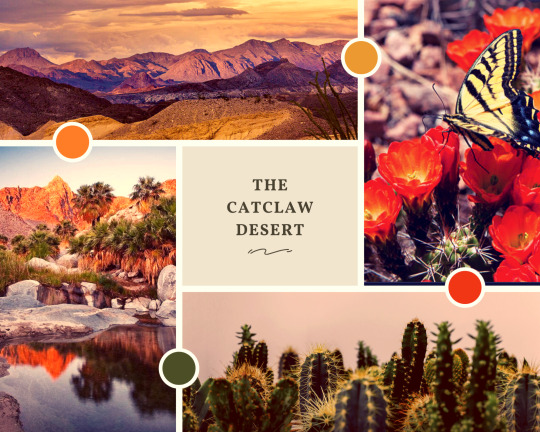
- A subtropical desert that receives infrequent bouts of rainfall. The climate tends to be consistently dry, receiving a little more rainfall in winter
- However, there are semi-arid patches here and there, particularly closer to the mountains, where the effects of changing seasons are more apparent, like frost
- Throughout the desert, spring is usually signaled by the coming of flutters and flutters of butterflies, nicknamed the Great Butterfly Rains, where migrating butterflies pause at Catclaw
- Oases are scattered throughout the desert, typically populated by the many nomadic tribes of the desert
- The tribes might have their disagreements, but overall, they tend to cooperate and assist one another where they can. After all, a single grain of sand is no desert, just as no single person can survive alone in the harsh climate of Catclaw
- Merchant caravans traveling through the deserts are uncommon, due to the harsh conditions and maritime travel generally being more favored
- Nopal is the biggest permanent settlement in all of the Catclaw Desert
ii. 🌙⛰️ THE BULAN MOUNTAINS 🌽

- While the Bulan mountains is a semi-arid place, it experiences far more rainfall than its desert neighbor.
- On top of that, there is its large main river, often called the Verde river, due to the rich soil by the riverbanks that allow for plantlife and crops
- The river weaves through the entire length of the mountains themselves, creating a river canyon, and branches off into smaller streams. There are also small box canyons here and there
- Most of the larger settlements are focused around the rivers and streams, to help sustain crops and livestock
- Landslides and erosions can be a frequent problem during heavy rainfall. To prevent this, it is common practice to carry out intercropping or forestry activities, mostly along areas with little vegetation
- Maize, corn and wheat are common staple crops, among a variety of others. The Bulan Mountains are particularly well known for their Bluemoon corn, which comes in different colors
- Latifundias are the center of agricultural activities, whether it’s for management of crops or animal rearing and are either community-owned or privately owned.
- There is no limit to the number of latifundias in one area and the layout is reminiscent of our world’s haciendas
- Like Vesuvia, the settlements of the Bulan mountains have complex aqueduct systems, both for agricultural and domestic purposes. Indoor plumbing is not unusual, even in smaller villages
- Stucco is a common building material, and houses are often painted in bold, bright colors, helping to reflect some of the heat
- Occasionally, nomadic tribes from Catclaw will migrate to the Bulan mountains, especially in the cases where their oasis or local water source has dried up.
- Recent droughts and the lack of water in even Nopal has led to more tribes moving to the mountains, establishing new routes and camps
- River travel is one of the main modes of transportation, particularly for these tribes as they journey through the mountains. They often carry out trade with the towns and villages scattered throughout the mountains
–––––––––––––
- At the foot of the mountains, along the coast, efforts have been put into by several towns to establish a permanent port known as the Bintang port
- There is merchant activity, both within the mountains themselves and with the outside. This is mainly with Prakra and the Republic of Galibrada
- As a result, there’s quite a bit of cultural exchange. Silk can be found in many towns, as well as Prakran curry and naan bread
- Traveling to the other side of the mountains, towards the south, is often done via maritime travel rather than traveling through the desert
- On the rare chance they do travel by land, Nopal is often a stopping point
–––––––––––––
Thanks for reading! 🥰🥰 Look forward to Part Two~
#mapthearcana#the arcana game#the arcana headcanons#the arcana meta#the catclaw desert#the bulan mountains#the arcana fan edits#i had loads of fun coming up w these. i hope yall enjoy them!#if i slipped up. esp when it comes to mexican culture pls feel free to tell me#mimi's originals#writing by the mims#my brain: logically a subtropical desert shouldnt rly experience winter#me: its FANTASY & also i wrote this in Mines prequel fic SO WE RE MAKING IT WORK!!!#i would love love LOVE to talk abt how Balayu (Mines homeland) has also had cultural exchange w the mountains#considering its called the BULAN mountains#the Malay word for moon/month#but ehhh i ll save that for my fics#this is more of a guide for anyone to use
27 notes
·
View notes
Text

ʙᴀɴɴᴇʀ ʙʏ @mappingthearcana
MOC’s Arcanaverse: Mourning Practices & The Lazaret
Note: It wouldn’t even have occurred to me to archive this information from the Oracle if it weren’t for this post by the lovely @apprentice-vissenta - please check it out!
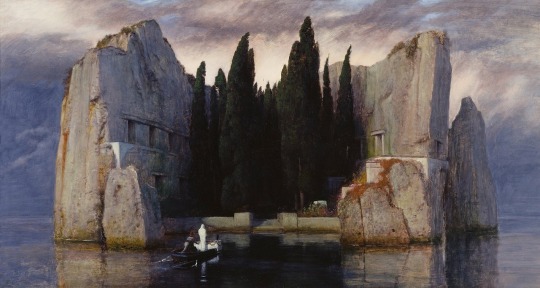
Vesuvians are respectful of all cultures and their mourning practices, but there are some overarching mourning practices in the city that are followed with little exception.
Bodies are always cremated, unless it is not permitted by a citizen’s religion. There are some mausoleums outside the city proper but most are on the Lazaret. The biggest name/wealthiest/oldest Vesuvian families keep their family plots there, though most choose the tradition of scattering the ashes and bones (such as the Valerius family). It is taboo to bury a body in the city.
The Lazaret has been a place where Vesuvians mourn and lay their dead to rest for as long as history remembers; it is for this reason that Death has a gate at the Lazaret.
The original crematorium was just as ancient, and rather modest - it was updated and expanded fourfold during the plague before the wings to house the condemned were built.
For Vesuvian funerals, the ashes are presented to the mourners after the departed is cremated at the Lazaret. The mourners then use the ashes to darken their eyes, before choosing a place to scatter the remainder of the ashes and bones.
This is normally the Vesuvian channel or the Lazaret itself, but some families choose their gardens or yards, if they have them. The Chapel of Cedars is also a popular choice; it is known, in part, as the Chapel of Cedars because it is believed the trees host the spirits of ancient Vesuvians whose ashes have been scattered there.
Vesuvian mourners wear all white, and many people (often women) choose to cover their head during mourning. They will generally wear white for a week, though practice fell out of vogue after the plague. Some widows and widowers will wear white for the rest of their lives, even if they take another partner or remarry (such as Blazhe).
If the departed was a shopkeeper, their shop light is wrapped in white linen for a week as well. This is thought to keep the spirit from returning to the shop (they can’t find it without the light), but it generally signals to patrons that the family is mourning.
Vesuvians comfort the mourning with gifts. Grief blankets (a Nuru custom) are a common gift, as are pots of honey, books of poetry, preserves and pickles, bread, and totems that represented the departed (after Opal’s death, for example, opals were given to Iris and Asra). Bouquets of flowers, particularly hyacinths and foxgloves, are appropriate for those who don’t know the mourners or the departed well but wish to express condolences.
Gifts are not presented to the mourning but rather are left on the doorstep. It is considered rude to burden the mourners with a visit unless they have invited you.
Reference: Arnold Böcklin’s “Die Toteninsel III”
@mappingthearcana
#cw death#cw mourning#mapping vesuvia#mapping the oracle#mapping the arcana#mapthearcana#the iris oracle#oracle references
27 notes
·
View notes
Text
The Laochra Tribe | Mapping the Arcana: The South

For Day 2 of @mappingthearcana: The South, I am talking about the area highlighted in the map above (which is a cropped version of my own edited Arcana map, which you can find here) and focusing specifically on my OC Meredith’s tribe, the Laochra.
I did not feel up to doing the extensive research to tie this into a real-world equivalent, so I’m pulling inspiration from a lot of different places and will be using a few pictures to get the aesthetics across.
But, with that being said, let’s get into the area of the Southern Spines itself!
Southern Spines
While the official Arcana map classifies this area as tundra, I... am going to disregard that, lol. Mostly because I envision this area to be covered in dense forests, and the mountains are filled with complex cave systems that house some of the area’s more dangerous wildlife.
A few pictures of what I envision below!
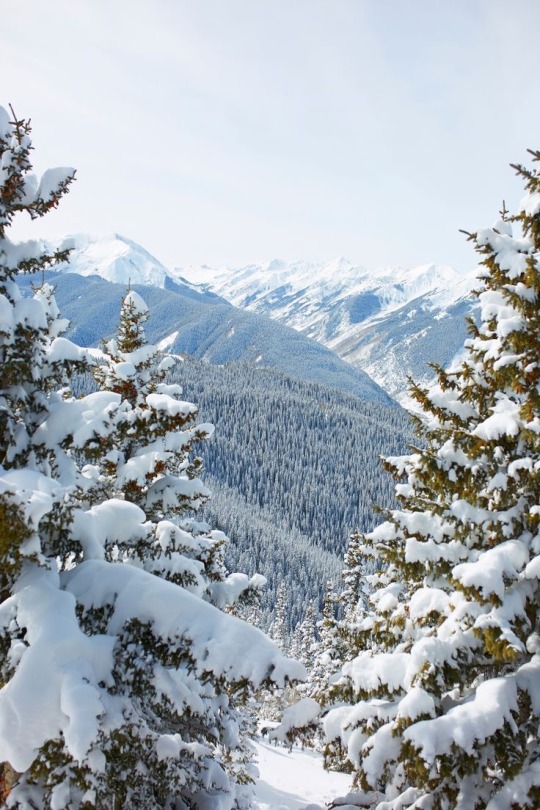
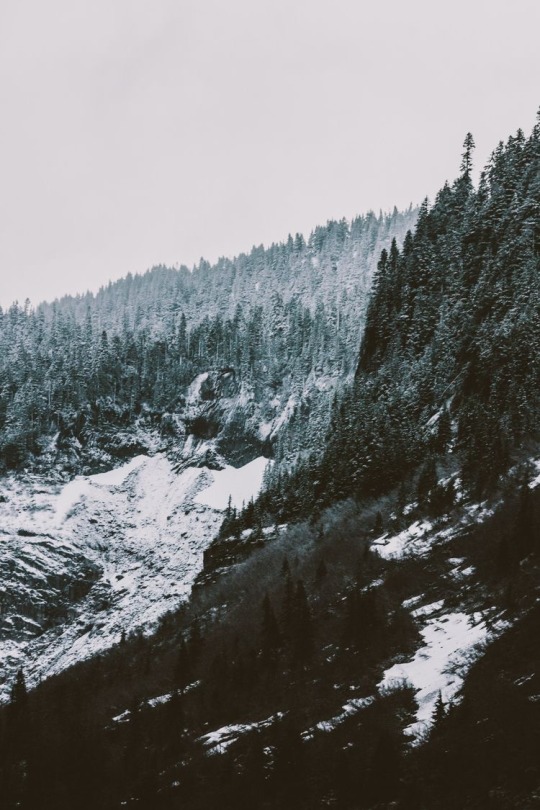

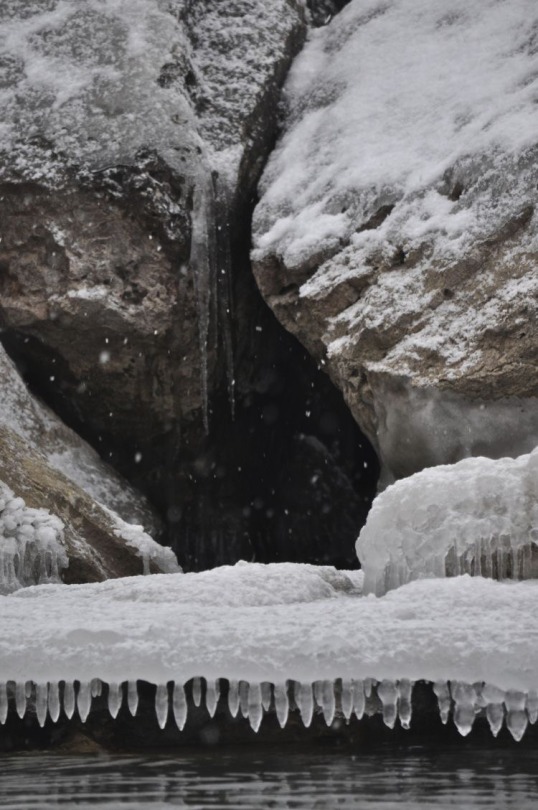
The mountain range is referred to in the common tongue simply as the Snowcap Mountains, but in the language of the Laochra, the range is called the Céimeanna Dia, or “God Steps,” referring to a legend among the tribe that the mountains were formed by a god pressing their feet into the earth and walking along the shoreline before entering the Frozen Sea.
The mountains themselves are filled with a number of deadly creatures, like the game’s mentioned muskbear, wolves, and my own canon of lindworms.
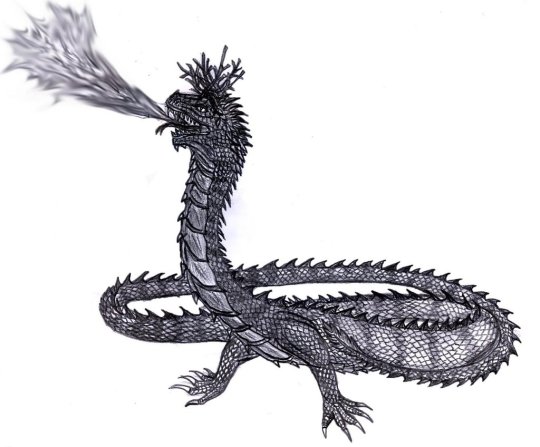

Prey animals include birds, hares, some deer, and fish off of the coast. There is a trading post at the south-eastern most corner of the continent where ships travel the Strait of Seals and trade primarily different meats and breads for the furs and pelts found in the South.
There were a great number of people in the Southern Spines, but over the generations, they were whittled away until by the time 50 years or so before the game timeline begins, the main three groups left were the Laochra, Morga’s clan more to the west, and the final tribe that I haven’t named yet that lived further to the north-east. In my timeline, this tribe is led by a person named Afon, and of the three, that tribe was the most magically-inclined.
The Kohkuri were established further north-west, and did not come in contact with the Laochra much, if at all, their conflict coming from Morga’s clan exclusively.
For this post, we are focusing on the Laochra alone!
History of the Laochra
The Laochra tribe was established hundreds of years before the Arcana game timeline, by people traveling from the east, across the Strait of Seals. They came from a similar climate and landscape, so navigating the cold, mountainous terrain of the Southern Spines was easy for them, though the local wildlife, not so much.
They are a nomadic people, often with multiple camps throughout the Spines, and they would move their main camp every decade or so across the map depending on the food supply, threat from wildlife or other tribes.
These are the same people that the first Pirate Queen, Niamh, is from, though she became Queen before they settled in the Southern Spines and no one in the tribe is related to her.
By the time Meredith was born, her mother Gwyn was the tribe’s leader, and though the Laochra fought frequently with Morga’s clan over generations, the two women had agreements in place that they would revise as needed, but mostly kept each of them from attacking the other. The leader of the third group of people, Afon, was not as easily appeased, and despite Gwyn’s attempts to communicate with their tribe, Afon refused and repeatedly attacked.
During one such attack, Gwyn was killed by Afon—though she also killed them—however Stefan, Meredith’s father, had his suspicions that Gareth, Gwyn’s twin brother, had dealt the final blow to Gwyn when no one was around. He wasn’t able to prove this, and Gareth was named as the temporary leader until Meredith would turn 18.
Gareth, his wife Rowena, and his son Fergus, spent the next few years making Meredith’s life miserable, and trying on numerous occasions to have her and Stefan killed. She survived by her own and Stefan’s combined efforts, but when he died protecting her during a lindworm attack, Meredith knew she would not be safe with her tribe while Gareth was leader. She ran, vowing to return when she was older and strong enough to fight him, only to return years later to find that the Laochra had been completely wiped out.
The Laochra were wiped out by two main reasons: Morga’s clan, and Lucio’s plague. Not long after Meredith escaped and fled to the North, Lucio made his first deal with the demon Vlastomil, and the plague-ridden red beetles began to follow him. The beetles made their way to the Laochra after a particularly vicious fight between them and Morga’s clan. After Gwyn’s death, Morga retracted all of her agreements and attacked regularly against the Laochra. Their final fight killed or injured at least half of the remaining Laochra, Meredith’s uncle Gareth among them, and then the plague infected and killed the remaining half, including Meredith’s aunt Rowena and cousin Fergus, making her, to her knowledge, the sole survivor of the tribe of Laochra.
General Culture
As the climate is very harsh and unforgiving, and the surrounding land and wildlife often more so, the people have adapted to survive. They do not waste anything, using every part of an animal they kill, or almost every part, as prey animals are scarce.
Every member of the tribe contributes in some way, from chopping trees for firewood, to hunting, to sharpening others’ weapons, to preparing and storing food when possible. The tribe does not divide any task by gender, instead they are focused by age and physical abilities. Older or physically disabled people are usually given tasks to complete around the camps that don’t require as much physical strength, like mending clothes or damaged weapons.
Families usually only have 1-2 children, any more and they may have trouble providing for them. If someone does give birth to more children, they will often allow other people/couples to adopt them.
When a child is born, they are given a surname based on their parents, usually the strongest/most influential parent is chosen as the namesake. They use the Icelandic suffixes of “-dottir.” “-son,” or the nonbinary “-bur.” Families can also choose to use both parents' names for the child, but this is rare.
For example, Meredith’s full name is Meredith Gwynsdottir, after her mother, who was named Gwyn Bransdottir, after her father.
Once a child is old enough to walk unassisted and speak/understand complete sentences, they are considered old enough to help around the camp, and often begin assisting with minor tasks before joining their parents with their more strenuous tasks like setting traps and hunting.
Every single member of the tribe is taught to fight and defend themselves no matter what age or potential disability, you have to be able to protect yourself and pull your own weight to survive in the South.
The only celebrations the Laochra have pertain to the summer and winter solstice, the shortest and longest nights of the year. There is usually a feast that the entire tribe partakes in, made with food that most of them helped hunt, and it is a time dedicated to sharing stories of past friends and family members, and to just share time with one another.
This is also one of the few times the tribe will partake in music outside of lullabies or funerals, often singing old traditional shanties that the original group brought with them and passed down for generations.
Language
The original language of the Laochra is loosely based on Irish, which over time morphed into closer to Welsh. This development occurred as the Laochra interacted with other tribes that had been living in the South before them, and as they traded more and more with ships off the Frozen Sea.
Laochra itself means Warrior.
This is why Meredith does not understand Saoirse’s language, despite them both having the same root, as it was mostly phased out of her tribe well before she was even born. The only exceptions are names of places, gods, and people that have been passed down within families, as most of those were established in the original language.
Most members of the tribe do not understand the common language unless they are traders who frequently visit with passing ships in the Frozen Sea. The leader and their family are supposed to personally handle most trade, so the common tongue is known to them by ear at least.
Leadership
The position as leader of the Laochra tribe is hereditary, and has been as such since the original group first arrived, though they did choose which family was to lead.
When a leader dies (or steps down, though the cases of this happening are very few), their oldest child becomes the next leader. If that person dies, then their oldest child is next in line, unless that child is younger than 18.
Only in this case would the oldest sibling of the hereditary leader take over in their place until the child is old enough, or, if the leader did not have any siblings, their spouse would take over. Once the oldest child of the hereditary leader is 18, they will automatically take their place, removing their temporary leader (an aunt/uncle, or father/mother) from their position.
If the leader did not have any children before passing, their oldest sibling would take their place. If the leader did have children in line to lead, but they died after their parent, and before turning 18, the oldest sibling of the leader would be able to keep their position.
The child of the leader does not have to be biologically related to the leader, if the leader adopted a child they are still considered next in line provided they are the oldest. Similarly, if the leader had a bastard child, and then children with their spouse, the bastard child is still the first in line to lead.
Due to this system, cases like Meredith’s where her uncle tried to have her killed for most of her childhood are not uncommon. They are not encouraged, as it is seen as cowardly to try and kill a child just for a position of power, but accidents are known to happen in the wild, and as long as it can’t be proved that the temporary leader caused any harm to the child, they will take position as permanent leader until their death.
If the leader did not have any children, siblings, or spouse to pass the leadership onto when they died or stepped down, the eldest member of the village would hold the position until the tribe had chosen a new family to lead, and then that family would begin the new leadership.
Appearance
The Laochra range from pale to medium-colored skin tones, with mostly blond or brown hair, but have very colorful eyes that range from black to gold to green to purple and beyond. They attribute eye color to favor of the gods, each color or combination a sign of which god is watching over you specifically.
Green eyes, like Meredith’s, are supposed to be a sign of the god of abundance, referred to as Flúirse.
Long hair is traditional as well as practical to protect against the elements and act as an extra layer of warmth, so all people will generally have hair long enough to tie back. Taking care of someone else’s hair is considered a very intimate and personal act, and it is often done between family members, close friends, siblings, and partners as a way to bond.
People who can grow beards will grow them out regardless of gender if they desire to further protect themselves, otherwise scarves and wraps that cover the lower half of one’s face are recommended.
Most of the clothing they wear are thick furs and pelts that they retrieved from animals they have killed, and while most people are expected to know a few basics of sewing to create simple cloaks, there is usually a person or two who serve as seamstresses to create more intricate articles of clothing.
Many of the Laochra have scars, as it is very easy to be injured while hunting, or if attacked by another tribe or clan. To be scarred in battle or against wildlife like the lindworm is often considered a source of pride, but seeking to be scarred is reckless and frowned upon.

Religion
The Laochra have many gods, most of them minor gods for hunting, the weather, or prosperity, but they have one main god who is referred to as The Seanchaidhe, or, The Storyteller.
It is likely that this god was a real person at first, a historian from the original group that founded the tribe, but over time they became much more than just a historian.
According to the Laochra’s beliefs, the Seanchaidhe oversees the tribe and records all that happens, writing the history of the tribe among the stars. The Laochra do not keep physical copies of their history, as they are mostly nomadic, and until they began trading with people off of the Frozen Sea, did not have the materials for books, so they rely on telling stories verbally to pass down information.
As words are all the tribe has, verbal communication is considered extremely important, and to not take someone at their word is considered a grave offense. To be caught in a lie can also have severe consequences, depending on the intensity of the lie. Words are considered sacred enough that a person’s First Word and Final Words are celebrated, and a person who dies without having their Final Words recorded by a living member of the tribe is thought to have trouble crossing into the next life and may curse their remaining family.
Wishing that someone’s Final Words would not be recorded is the same as damning them and is very offensive.
Aside from the Seanchaidhe, as mentioned above in Appearance, each person is thought to be chosen by a god at birth, but they are under no obligation to worship that god if they do not wish to. Most do, just to be on the safe side, by leaving a small plate of food out during a new moon, or burying the remains of a small animal, or lighting something small and treasured on fire. How each person decides to honor the gods they personally care about is different, but the methods are usually passed between families.
Marriage
Marriage is not seen as a necessity for the Laochra, especially considering that many partners live together early on in their relationship to share resources, so there is not much of an actual celebration. However, the act of proposing is considered extremely important for a lasting relationship.
Traditionally, to propose to someone, a person will gift their partner a weapon, whatever their partner prefers, that they have crafted themselves. Usually the weapon gifted is a dagger or similar hunting knife, as that is most practical, but bows and arrows are acceptable as well as spears. It is meant to be proof of understanding and knowing your partner and their preferences, how they prefer to hunt or protect themselves, what size would fit their hand best, what weight would work best, etc. You can choose to decorate it if you wish, but the weapons are meant to be practical, so it is not necessary.
It is also traditional to make the weapon out of the tooth or bone of an animal, specifically a lindworm. Lindworm teeth are extremely sharp and serrated, and they lose teeth like sharks, so it used to be fairly easy to find a tooth without having to kill the lindworm to get it. However, as lindworms became more scarce and started to largely avoid the tribe, it became less common to use teeth, and bone, like the knife Meredith owns that was originally her great-great-great grandfather’s, was seen more often.
Some examples of what proposal weapons might look like:
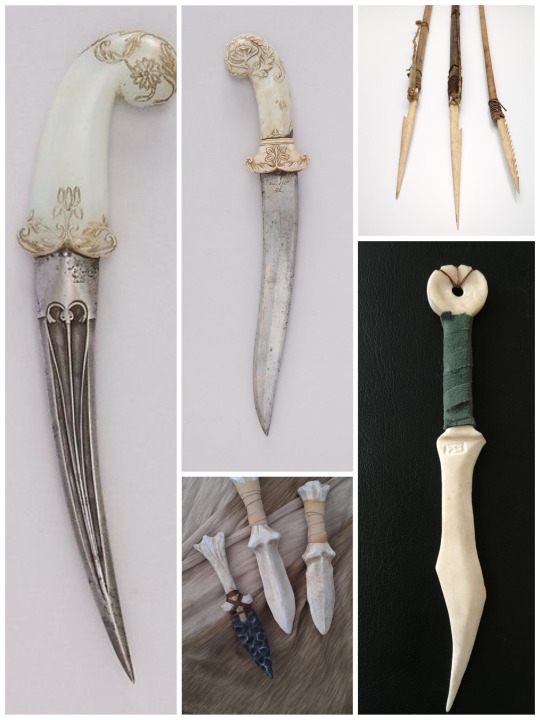
The person being proposed to can accept or reject the proposal. If they accept, their wedding will take place by the next full moon, and the ceremony is usually performed by an elder in their families or the leader of the tribe, whoever the couple prefers.
The ceremony is short, simple, and includes vows that the couple create themselves. They do not wear any sort of fancy dress, just their normal, everyday furs and pelts. Before reciting their vows, the proposal weapon is used to prick each partner’s left thumb, and they each draw a horizontal line over the other’s forehead and heart in their own blood to signify their ties, and then they join hands.
Once the vows have been recited, the couple will eat a meal they prepared themselves, of an animal they hunted together, and the person they invited to perform the ceremony will eat with them as a witness of the union. When the meal is finished, the ceremony is over, and the couple is married. Often, the proposal weapon will be adjusted afterwards to include some part of the vows somewhere, like carved into the hilt, but this is a more recent tradition with the introduction of their alphabet.
This ceremony can be adjusted for polyamorous partners, where there may be multiple proposal weapons, and a bigger meal. It is not uncommon for households of more than two partners to exist in the Laochra.
If the person being proposed to rejects the proposal, they can choose to keep the proposal weapon or give it back to their partner. A proposal rejection is not always a relationship-ender, it usually just makes the person who proposed aware that they may not know their partner like they thought they did, and they need to re-evaluate that on their own.
Death

The Laochra believe that when a person dies, they join the Seanchaidhe in the sky and are turned into a star that holds all of their collected memories. They do not often visit their family left in the living world, provided they were completely passed on, and did not hold any grudges before they passed.
There are three things that need to happen when a person dies in order for their spirit to be considered fully and peacefully passed on. Their Final Words must be recorded, they need to be sung to sleep, and their body set adrift on the Frozen Sea.
As mentioned above in Religion, the most important part of someone’s passing is recording their Final Words. It is the last thing that the person will put their own thought and meaning into, and if their Final Words are a request, they must be treated as law, no matter what the request is. To die without having your Final Words recorded is a dishonor, and means that the spirit has little chance of being properly recorded in the stars.
After a person passes, or at least after they have spoken their Final Words, the person who recorded that and/or their immediate family and spouse will sing the deceased to sleep. The usual song to sing for the deceased spirit is called “An Mac Tíre Airgid,” or “The Silver Wolf,” which is a song that tells about the journey of the first group of Laochra and their passing, intended to help the spirit reconnect with their ancestors in the stars as their body shuts down completely. This can be done even without the body present, as long as the person singing was closely related to the deceased person by blood or by choice, but it should be done outside, at night, and while looking at the stars.
Finally, the body must be set adrift on the Frozen Sea, preferably heading further south. This last step is not considered entirely necessary, especially when the tribe’s main camp was further inward and the trek to the shore would have taken days, but it is just as symbolic as the rest of the traditions.
The Laochra believe that at the end of the world, the furthest point South, there is a god of death who takes the bodies to the Seanchaidhe to join their souls in the sky. When the Southern Lights cross over the sky at night, those are said to be the bodies reaching out to their spirits in the stars to join together. They call this god The Bailitheoir, or The Collector, and when the body is sent out in a small canoe, it is lit with flaming arrows not to burn the body, but to send light and warmth to the Bailitheoir, as they exist in cold darkness.
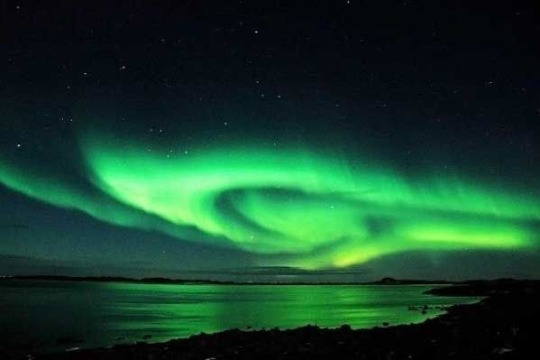
If none of the three traditions mentioned happen after someone’s death, their spirit is thought to be trapped in the earth, eventually turning them into a lindworm that will stop at nothing to kill those who dishonored them.
#mapthearcana#the arcana#the arcana game#into the daniverse#lore#meredith#saoirse#anddd im sure there will be more eventually but that's all I got for now
28 notes
·
View notes
Text
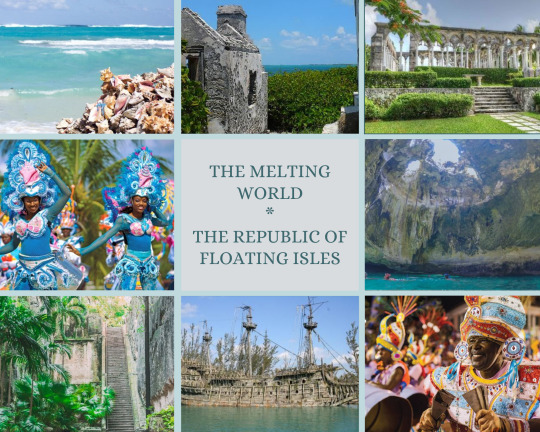
Area on the Arcana Map: Islands off the Northern Prakran Coast
How I refer to the region in my fics: The Melting World (pre-colonial / post-independence) / The Republic of Floating Isles (colonial name)
Geographic Inspo: The Bahamas
Photography of the People: residents celebrating history, culture, and liberation through Junkanoo, the Bahamian equivalent of Carnival. Learn more here!
OC Origins: Ozy, Kipling, Khleo
23 notes
·
View notes
Text

Area on the Arcana Map: Emerald Sea coastal region northeast of Nopal
How I refer to the region in my fics: Esmeralda
Geographic Inspo: The Philippines
Photography of the People: an elegant woman sporting her bora’t saya, a transcendent staple of both traditional and influential Filipino fashion (far right). Learn more here!
OC Origins: Sascha, Solo, Floribeth (The De La Vegas immigrated from here to Vesuvia not long before the twins were born)
#mapthearcana#arcana moodboards#casa vega is very much inspired by the estates in esmeralda#the de la vegas#solo de la vega#sascha del la vega#floribeth de la vega#world building
25 notes
·
View notes